Understanding Pittsburgh’s Poor Air Quality
And What You Can Do About It
The Smoky City - Pittsburgh's Other Nickname
Pittsburgh, affectionately known as the “Steel City,” has a remarkable history. As an industrial powerhouse, Pittsburgh produced the high quality steel that built America. Pittsburgh steel can be found in buildings, monuments, infrastructure, vehicles and machinery across the country – from the Golden Gate Bridge to the Empire State Building. However, industrialization came at the cost of the city’s abysmal air quality, earning it the unfortunate nickname “The Smoky City” due to its regular smog and terrible air pollution.
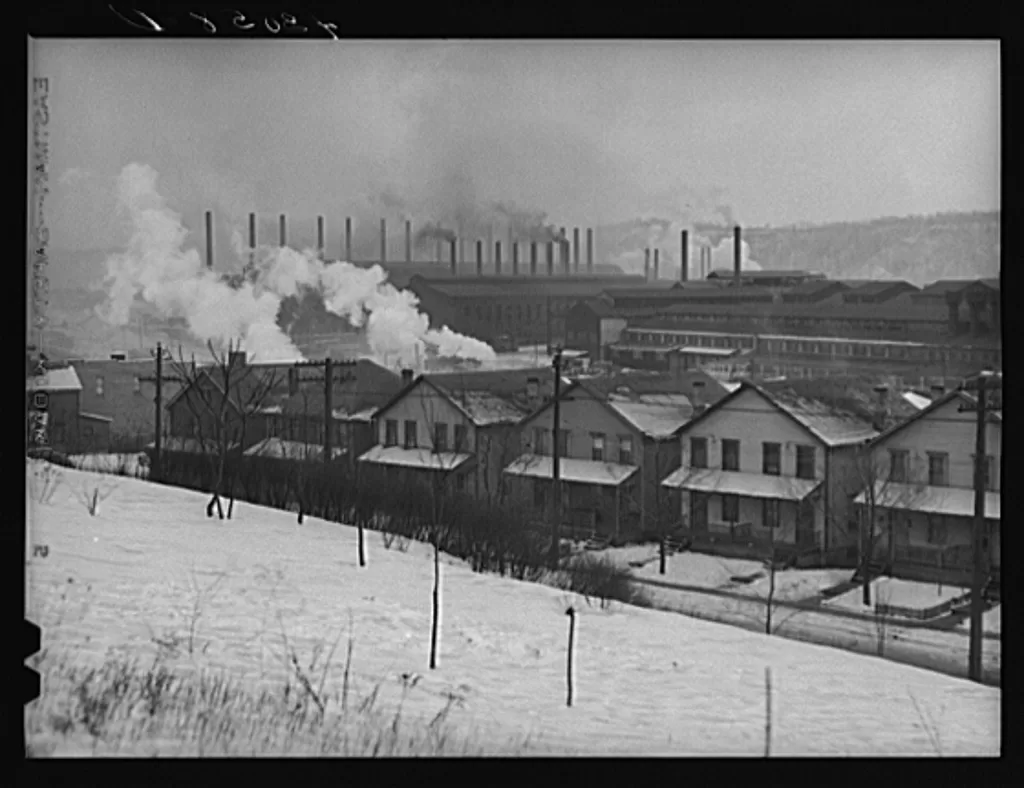
Beginning in the early 1960s, there have been a number of federal, state, and local environmental regulations implemented aimed at reducing air pollution and improving air quality in Pittsburgh. Since then, air pollution has been reduced drastically.
Despite this massive improvement, The Steel City still struggles with air quality, earning it an “F” rating from the National Lung Association. In this blog post, we will explore why Pittsburgh’s air quality is still so poor, and what you can do to protect your family’s health.
A Quick Disclaimer: Environmental regulation is a very complex scientific field, and we’re definitely not environmental scientists. We are, however, extremely passionate about Pittsburgh and the people we share our city with! Our goal isn’t to delve into every factor that affects the environment or provide policy recommendations (we’ll leave that to the rest of the internet!). Instead, we’d like to educate our readers on what makes The Steel City environmentally unique, and provide tips on how to keep their homes happy and healthy.
With that being said… Why is Pittsburgh’s Air Quality So Poor?
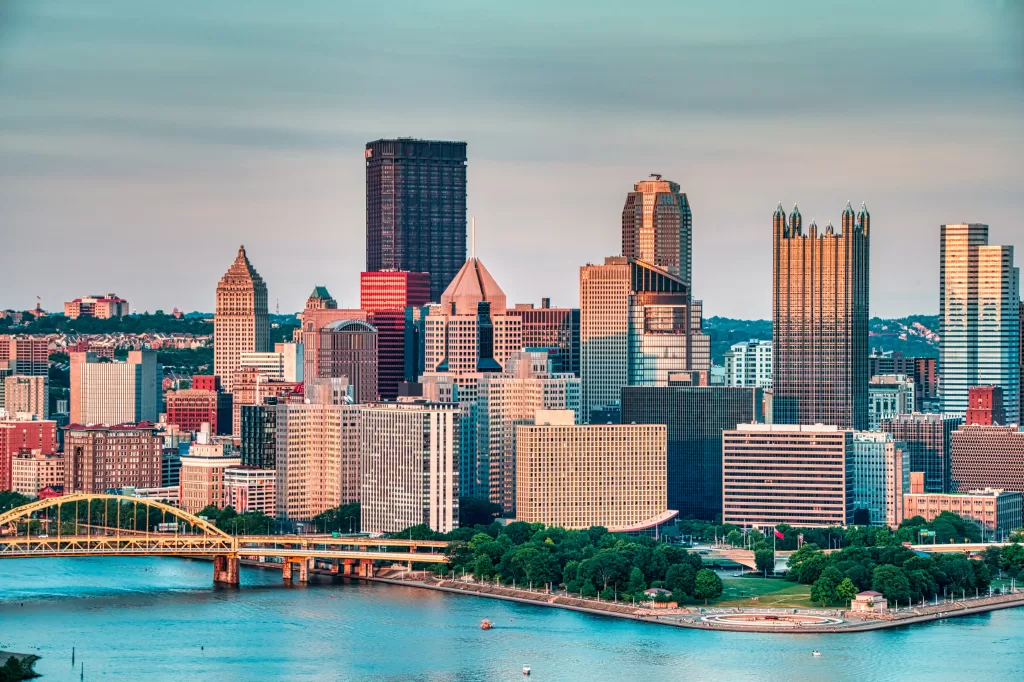
Geography.
Nestled in the cradle of the Allegheny Mountains, Pittsburgh is a breathtaking marvel of natural beauty. Its position at the confluence of the three rivers, Ohio, Monongahela, and Allegheny, is a sight to behold. With the rivers flowing around the city, the bridges linking the shorelines, and the hills rising in the distance, it’s no wonder that Pittsburgh is known for its stunning views.
The city’s landscape is a testament to the majesty of nature and human ingenuity, creating a harmonious blend that’s both awe-inspiring and comforting. This geography however, is a major contributing factor to why efforts to improve air quality are significantly less effective in Pittsburgh than other cities. Because of its geography, Pittsburgh is prone to temperature inversions.
Temperature Inversions
If you remember from elementary school – Sunlight warms the ground, the ground warms the air, the warm air rises, and the air gets cooler the further it rises. This cycle, along with ocean tides, creates wind and allows air to circulate.
This is why when our cars, factories, and power plants create exhaust, the exhaust doesn’t just linger. It disperses into the atmosphere, keeping the air around us safe to breath. A temperature inversion breaks this vital cycle.
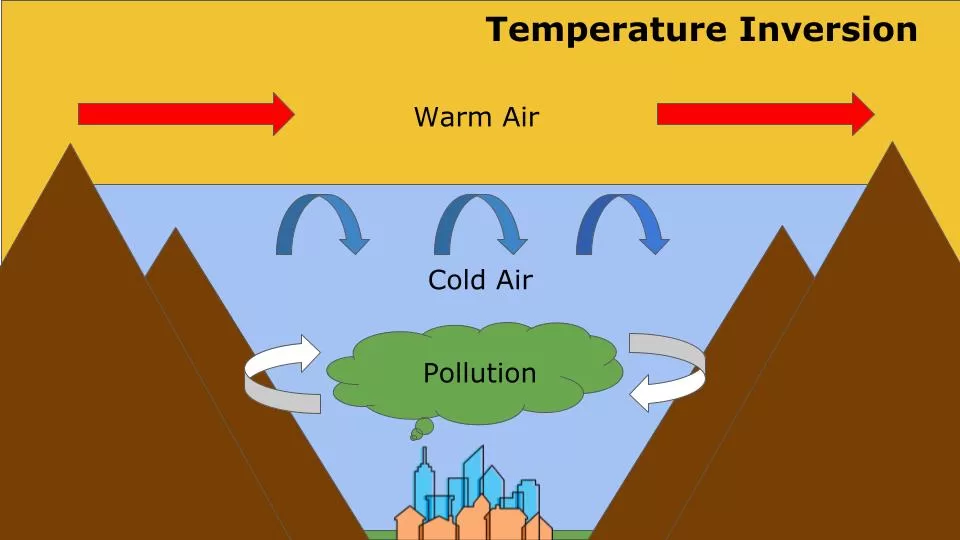
A temperature inversion occurs when a layer of warm air traps cooler air beneath it. When a city lies in a valley or basin, the warm air acts like a lid – trapping the cold air and pollution inside, causing it to build up for days or even weeks. If a temperature inversion lasts for a week, there could be multiple days worth of pollution in the air! To make matters worse, most of Pittsburgh’s weather blows in from the West… meaning it probably came from Ohio. Ew! Gross!
Joking aside, temperature inversions can seriously impact your health, especially if you have preexisting respiratory conditions. Before modern environmental regulations, they could be downright deadly.
The Donora Smog
Donora, PA is a small town on the Monongahela just 24 miles southeast of Pittsburgh. In 1948 the town experienced one of the worst air pollution disasters in history. At the time, it was home to two factories that emitted hydrogen fluoride and sulfur dioxide, which, needless to say, is not very healthy.
Normally these toxic fumes would dissipate, keeping the air quality tolerable; but on October 27, 1948 Donora experienced a temperature inversion. The pollutants, trapped in the valley, mixed with the fog turning the air into a thick, acrid, yellowish smog. The thick smog made driving nearly impossible and almost half of the residents fell ill. Russel Davis, a Donora Fireman, said the smog was so thick that he had to “… [drive] on the left side of the street with my head out the window. Steering by scraping the curb” in order to reach emergency calls from residents. The temperature inversion lasted five days, leaving 70 residents dead, and 6,000 of the towns 14,000 residents seriously ill.
The Donora event led to the first large-scale epidemiological investigation of an environmental health disaster in the United States. It is also credited with being the inspiration for the clean air movement in the United States, culminating in the passage of the Clean Air Act of 1963.
Pittsburgh's Air Quality Today
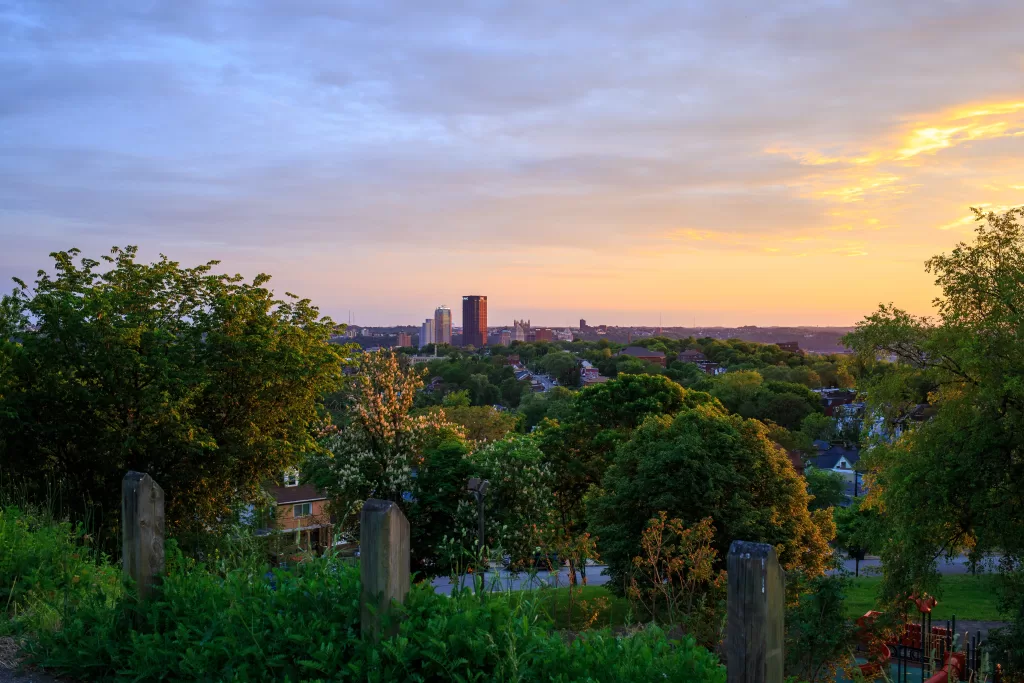
Thanks to modern environmental controls, we no longer have to worry about environmental disasters on the same scale as Donora. However, it’s important to note that we still experience temperature inversions today.
Inversions occur in Pittsburgh a few times a year, typically in the fall through the spring, although they can happen in the summer too.
While you may not see a thick yellow smog on your way to work, you may notice that you cough a little more, experience allergy symptoms, or experience other respiratory symptoms. Worsening air quality forces our bodies to work harder, which can weaken your immune system, causing you to get sick. People with lung conditions, the elderly, and children are most at risk during these events.
If you or your loved ones experience respiratory problems, it is important to understand the impact of air pollution on your health and take proactive steps to minimize exposure.
How You Can Be Proactive!
Thankfully, it’s easy to check your local air quality on your smartphone’s weather app or a specialized air quality app. It’s essential to stay informed and take precautions if you or a loved one has respiratory conditions like asthma or COPD. These individuals are more susceptible to the negative effects of poor air quality, and it’s crucial to take steps to reduce exposure to pollutants.
Limiting outdoor activities on days with poor air quality, keeping your home clean, and using air purifiers at home are all simple yet effective measures that can help protect your family’s health.
Your HVAC System Keeps Your Home Healthy
Your home’s HVAC system is designed to filter out contaminants in the air, like allergens, chemicals, dust and other nasty stuff you definitely don’t want your family breathing. However, if you don’t clean out your air ducts regularly and replace your filters, harmful chemicals and other contaminants can attach themselves to the dust inside your home. In fact, some harmful chemicals don’t naturally decay, and just live in the dust in your home until you remove it. DDT (Dichlorodiphenyltrichloroethane) is a toxic pesticide that has been banned in the US for over 70 years, and it can still be found in the dust of some homes!
It’s crucial to maintain your HVAC system regularly to ensure that it’s functioning correctly and efficiently filtering out contaminants coming from inside and outside your home. Regularly replace your air filter and have your air ducts professionally cleaned.
If you’re not sure if it’s time to get your air ducts cleaned or not, we wrote a comprehensive guide on just that subject (click here to read more). A good rule of thumb: if it’s been more than two years, or you can’t remember the last time you had your air ducts cleaned, then it’s probably time to give us a call.
I've Got What In My Carpet!?
Other than regularly maintaining your HVAC system, professional carpet cleaning can have the biggest impact on your indoor air quality. Carpet can be a cozy and comfortable addition to your home, but it also acts as a trap for dust, dirt, chemicals, allergens and other pollutants. These contaminants can accumulate in your carpet for years, and it is downright impossible to remove them with regular vacuuming.
Not only can professional carpet cleaning make your carpets look years younger by removing dirt, dust, grime, and allergens, but also pollutants and harmful chemicals too! Don’t overlook professional carpet cleaning as an important step to take to protect your family’s health.
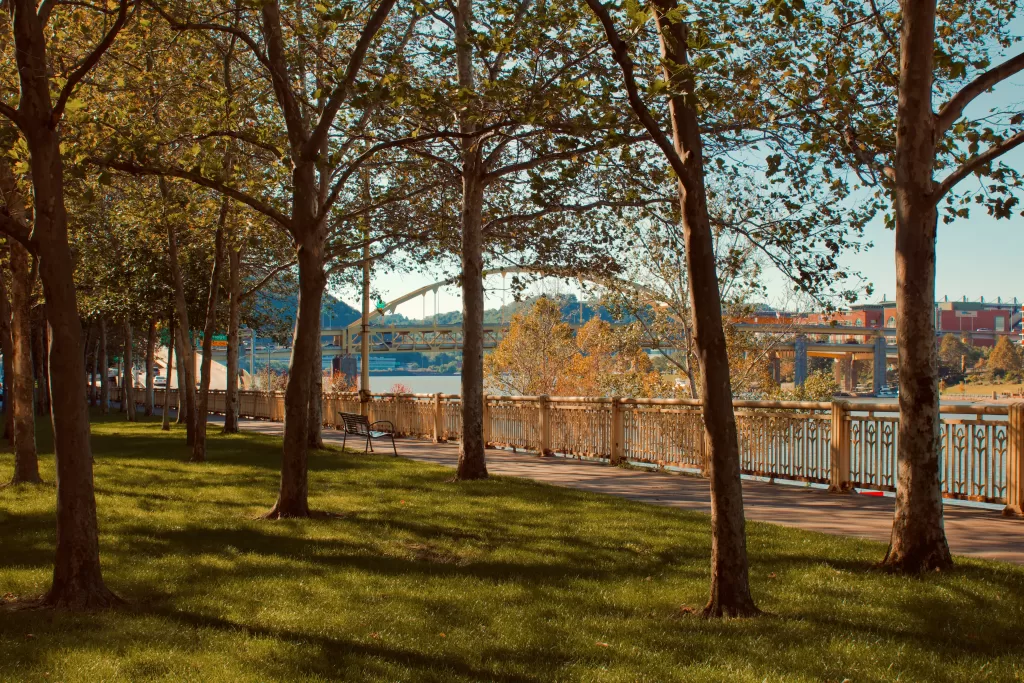
No Longer The Smokey City
Pittsburgh’s air quality has come a long way in improving its air quality since the “Smoky City” days, but it’s still essential to take measures to protect your family’s health. Checking local air quality, taking precautions for respiratory issues, maintaining your HVAC system, and professional carpet cleaning are all steps you can take to ensure that your indoor air quality is as healthy as possible.
At Clean and Pristine Services, Inc. we understand the importance of maintaining a healthy home environment, and that’s why we offer all the specialty cleaning services you need to help keep your family happy and healthy. Contact us today to schedule an appointment and take the first step in protecting your family’s health.
